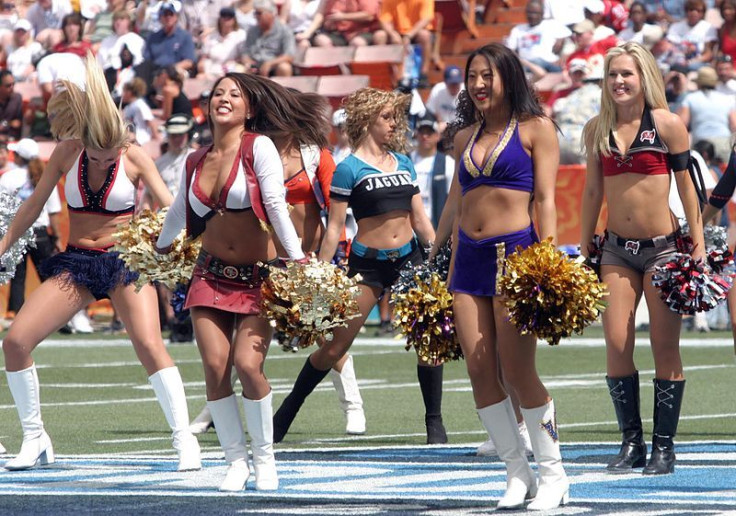Cheerleading Is 'Most Dangerous Sport' For Women, Causing Two-Thirds Of Severe Sports Injuries

According to the American Academy of Pediatrics (AAP), although most high schools and colleges have cheerleaders, only 29 state high school athletic associations recognize cheerleading as a sport. In fact, the National Collegiate Athletic Association does not have competitive cheerleading listed as a sponsored sport. The failure to recognize cheerleading as a sport could jeopardize the health of cheerleaders and put them at risk for serious injuries. Cheerleading is “the most dangerous sport” for U.S. women and is responsible for 66 percent of catastrophic injuries, according to a recent study.
Findings published in Pediatrics reveal that competitive cheer accounts for two-thirds of severe injuries that can shorten lives, result in permanent disability, or cause long-term medical conditions among young U.S. women. The researchers analyzed a group of junior and senior high school girl cheerleaders along with female college cheerleaders who had experienced head injuries as a result from cheerleading.
The researchers found that six percent of all cheerleaders’ injuries are concussions defined as “traumatically induced alterations in mental status” caused by damage to the head. Thirty-seven percent of junior and senior high school cheerleaders reported that they have had symptoms of a concussion but failed to tell someone. Most injuries were not caused by being thrown in the air but by the errors of those responsible for catching the cheerleaders on the ground.
According to the Children’s Hospital Colorado Orthopedics Institute, strains and sprains account for more than half of all cheerleading injuries. Since cheer often requires the performance of gymnastic stunts, it is considered to be a competitive high-contact sport or activity that can also commonly result in head concussions. As a year-round activity without an extensive off-season like other sports, cheerleaders are more susceptible to a high number of severe injuries.
Alarmingly, the study also revealed that a cheerleader’s ability to play after suffering a concussion, or a serious injury of any sort, is heavily and often based on self-diagnosis. "Given these results, it is of concern that most return-to-play decisions after concussion have relied heavily on the athlete's self report of symptoms,” wrote the researchers.
Over the last three decades, a total of 110 head and spine injuries resulted in permanent brain injury, paralysis, or death,” the Washington Post reports. The AAP hopes these statistics will get more states to recognize cheerleading as a sport to ensure proper regulation and qualified coaches.
“I don’t know that the general impression has evolved as fast as the sport has. It takes time for these things to register.” said Cynthia LaBella, lead author of a separate AAP paper and an associate professor of pediatrics at Northwestern University’s Feinberg School of Medicine, to the Washington Post.
"These girls, and boys, are at risk for injury. This should be considered a sport, and these folks should be treated as athletes, not as entertainers."
The AAP recommends any cheerleaders that are suspected of having a head injury to be removed from practice or competition and be prohibited from returning until they have received clearance from a healthcare professional.



























